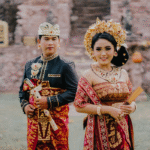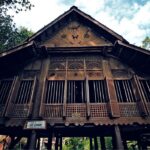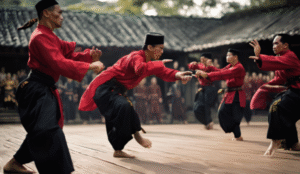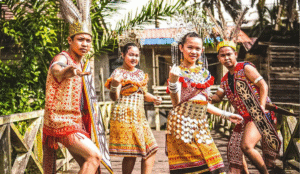Village Life Activities: Kampung Hosts and Their Tourism Stories
Imagine waking up to the sound of roosters crowing, breathing in the fresh morning air, and watching mist drift across lush green paddy fields. This is the essence of village life in Malaysia—a rhythm of peace, authenticity, and connection with nature and community.
In recent years, more travelers—both Malaysians and foreign tourists—have shown growing interest in experiencing village life through kampung stays and rural tourism programs. These experiences offer more than just a getaway from the city; they reveal the stories behind the people, their traditions, and the soul of Malaysia.
In this blog post, we’ll explore the beautiful daily activities of kampung life, share unique encounters with warm kampung hosts, and highlight how rural tourism brings cultural heritage to life. This is your ultimate guide to understanding and experiencing village life—the heartbeat of Malaysia’s countryside.
Frequently Asked Question (FAQ):
1. What is the lifestyle like in Malaysia?
Malaysia’s lifestyle is a vibrant blend of tradition and modernity. In urban areas, life is fast-paced and tech-driven, while in rural communities, it’s slower, more connected to nature, and rooted in culture. Village life reflects strong family ties, communal living, and deep respect for traditions, making it a refreshing contrast to city living. Visitors often fall in love with the simple, peaceful rhythm of daily activities in kampungs.
2. What are Malaysian villages called?
In Malaysia, villages are commonly called “kampung” (or “kampong” in older English usage). A kampung is more than just a village—it’s a close-knit community where people live, work, and celebrate together. Many of the best village tourism experiences are found in kampungs across the country, each offering unique stories behind their culture and heritage.
3. What is a homestay in Malaysia?
A homestay in Malaysia refers to a tourism program where visitors live with a local family in a kampung. It allows guests to experience village life firsthand—participating in local cooking, farming, craft-making, and cultural traditions. These homestays are certified by Tourism Malaysia and offer an authentic way to learn about Malaysian customs through daily interaction with kampung hosts.
4. What factors have contributed significantly to the growth of tourism in Malaysia?
Several key factors have boosted Malaysia’s tourism industry: rich cultural diversity, natural attractions, affordable travel costs, and government-led initiatives like the Malaysia Homestay Program. The growing interest in rural tourism and village life also plays a role, as travelers seek immersive experiences and the stories behind local ways of living.
5. How much do homestay families get paid?
Homestay families in Malaysia typically earn income based on the number of guests and nights stayed. On average, hosts may earn between RM 80 to RM 150 per night per guest, depending on services provided. This income supplements their livelihood while preserving village life and promoting cultural exchange. It’s a win-win that keeps the daily activities and heritage of kampungs alive and valued.
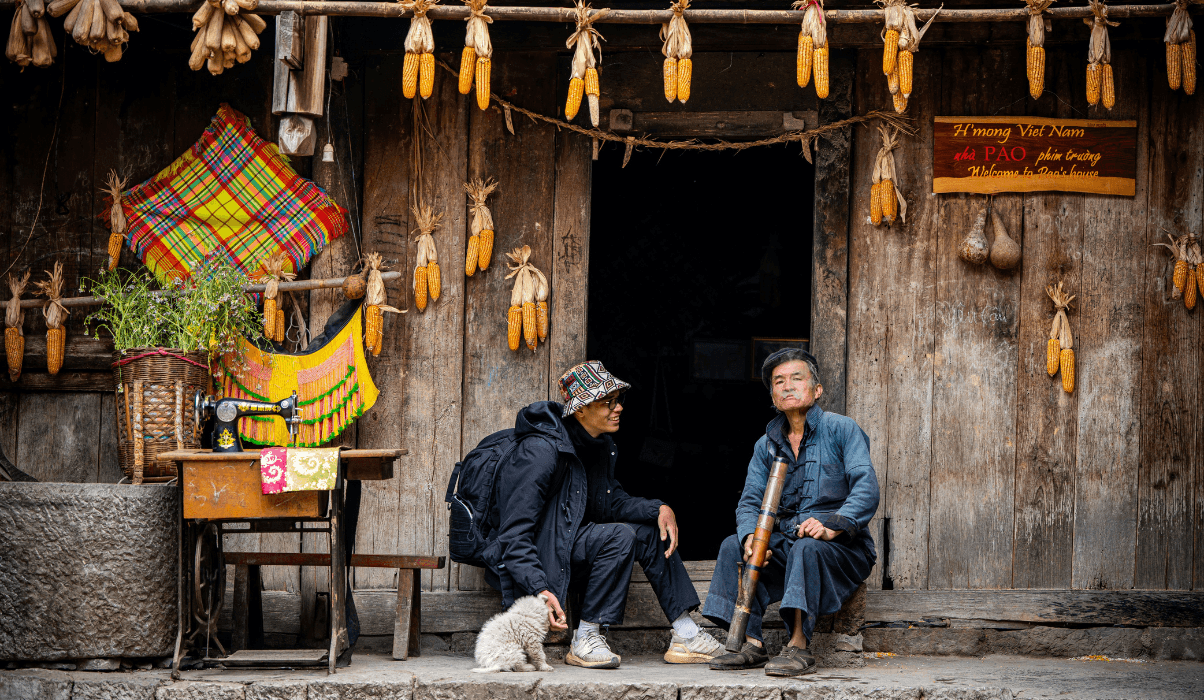
Why Village Life Matters More Than Ever
As the modern world becomes increasingly fast-paced and digital, many people are seeking simplicity and authenticity. In this shift, village life offers an escape—a return to traditions, human connection, and natural surroundings.
Malaysia’s kampungs (villages) offer not only serene landscapes but also deeply rooted cultures. From farming and fishing to weaving and cooking, kampung communities live in harmony with the land and each other. The stories behind their customs are passed down through generations, making every kampung a living museum of heritage.
More importantly, rural tourism plays a key role in preserving this way of life. When travelers visit, stay, and support these communities, they help protect a valuable part of Malaysia’s identity.
The Best Village Destinations in Malaysia for Authentic Experiences
Malaysia is blessed with hundreds of villages, each offering a unique glimpse into local culture. While it’s hard to choose the best village, here are a few kampungs that stand out for their hospitality, scenic beauty, and immersive activities:
Located near Temerloh, this village welcomes tourists into traditional Malay wooden homes. Guests can join locals in cooking, batik painting, and learning silat (Malay martial arts).
This is a vibrant Orang Asli village known for its forest walks and traditional blowpipe demonstrations. The stories behind the Temuan tribe’s spiritual connection to nature are deeply fascinating.
In Borneo, you’ll find this Bidayuh longhouse community nestled in the jungle. With 100+ families living in one extended home, you’ll get to experience village life the way it’s been lived for centuries.
A hidden gem along the Jelai River, this best village for river activities lets visitors try bamboo rafting, freshwater fishing, and learn about rubber tapping.
These places are more than scenic destinations—they’re homes where traditions are practiced and shared with pride.
Daily Activities of Village Life: What Kampung Hosts Want You to See
One of the greatest charms of village life is its simplicity. Visitors often discover that the daily activities that may seem ordinary to villagers are refreshing and inspiring to outsiders.
Here are some of the most popular daily activities you can join during a kampung stay:
1. Paddy Planting and Harvesting
Depending on the season, guests can help plant or harvest rice. It’s a muddy, sweaty, yet rewarding experience that connects you to the land—literally.
2. Feeding Livestock
Wake up early and join your host to feed chickens, goats, or cows. Children especially enjoy this, as it brings them close to animals they rarely see in the city.
3. Cooking Local Dishes
Join in preparing traditional meals like gulai tempoyak, rendang, or lemang. Learning the stories behind each recipe—passed down from grandmothers to grandchildren—is part of the joy.
4. Fishing and Net-Casting
Head to nearby rivers or ponds with your host to learn how to catch fish using traditional methods like jala (casting net) or bubu (bamboo trap).
5. Craft-Making
From weaving mats to carving wood, these crafts carry cultural significance and offer a deeper look into village life creativity and skill.
All these daily activities highlight the harmony between people, community, and nature. For many tourists, it’s a rare opportunity to slow down and reconnect.
Kampung Hosts: The Real Heart of the Experience
What truly makes a kampung stay unforgettable isn’t the scenery or food—it’s the people. Kampung hosts welcome guests with genuine warmth and open hearts, treating strangers as family.
“When guests come, we don’t just show them our homes—we share our lives,” says Mak Jah, a long-time host in Negeri Sembilan.
These are the stories behind the smiles: families waking up at 5 AM to cook for guests, grandmothers teaching children to dance, fathers taking visitors on forest walks while recounting folktales.
Many kampung hosts take pride in sharing cultural values such as gotong-royong (communal work), where the whole village helps each other during events like weddings or harvest festivals.
Visitors often leave with more than just souvenirs—they gain lifelong memories and friendships built during their short time experiencing village life.
Culture Through Festivals and Ceremonies
If you’re lucky to visit during special times, you might witness a kampung’s village life during major cultural events:
- Hari Raya Aidilfitri: Experience open houses, traditional games, and communal feasting.
- Gawai Dayak in Sarawak: A vibrant harvest celebration with dancing, food, and rituals.
- Pesta Kaamatan in Sabah: A Kadazan-Dusun festival that celebrates rice, culture, and gratitude.
During these times, the daily activities are enriched by ritual and celebration, making it the best village experience for cultural immersion.
Stories Behind the Smiles: Real Experiences from Tourists
Travelers who have embraced village life often leave with profound stories. Here are a few shared experiences:
Tourism from Germany:
“I helped plant rice in knee-deep mud, and Mak Cik Lina taught me how to cook sambal belacan from scratch. That evening, we ate together under the stars. I’ve never felt more welcome anywhere in the world.”
Tourism from Kuala Lumpur:
“At Kampung Ratau, I learned how to paddle a bamboo raft. My host uncle told me the stories behind every bend of the river. It made me realize how much heritage we still have in Malaysia.”
These testimonials prove that village life tourism isn’t just sightseeing—it’s story-living.
Sustainable Tourism: How Village Life Supports Communities
Beyond personal enrichment, visiting kampungs also supports local economies and helps preserve traditions.
- Income Diversification: Hosting tourists provides families with an alternative income source, reducing reliance on agriculture alone.
- Youth Empowerment: Young villagers trained in hospitality can stay in their hometowns instead of migrating to cities.
- Cultural Preservation: Traditional dances, music, recipes, and stories behind crafts are kept alive through storytelling and demonstration.
By choosing to explore village life, you contribute to meaningful, community-driven tourism.
How to Be a Respectful Guest in the Village
When immersing yourself in village life, it’s important to be mindful and respectful of local customs. Here are a few tips:
- Dress modestly, especially in conservative Muslim villages.
- Ask before taking photos of people or homes.
- Participate with humility during daily activities—you’re here to learn, not to lead.
- Be curious! Kampung hosts love sharing the stories behind their way of life.
These small gestures go a long way in building trust and enriching your experience.
Planning Your Village Life Adventure
Ready to embrace village life firsthand? Here are some planning tips:
- Best time to visit: Dry season (March–October) is ideal for outdoor activities.
- Book in advance: Some kampungs are popular and only have a few homestays available.
- What to pack: Lightweight clothes, sunblock, insect repellent, and an open heart.
Many tourism boards like Tourism Malaysia and community programs like Program Homestay Malaysia can help you find the best village experience to suit your interests.
Education Through Immersion: Learning in the Kampung
Many tourists, especially students and families, seek experiential travel where learning goes beyond museums and textbooks. That’s where village life truly shines. Every aspect of kampung living becomes a classroom—one where learning happens through touch, taste, stories, and shared time.
Things you can learn in kampung:
- Traditional Farming Techniques: From how crops are rotated to how natural fertilizers are used, guests learn sustainable practices from generations of local knowledge.
- Folk Storytelling: In the evenings, villagers often gather to share cerita rakyat—tales of local spirits, warriors, and ancient wisdom that reveal the stories behind the community’s roots.
- Cultural Etiquette and Beliefs: Visitors understand concepts like adat (customs) and pantang larang (taboos), enriching their cultural intelligence and respect.
This is not just tourism—it’s transformation. Schools and youth groups now include rural homestays as part of their learning curriculum, creating lifelong impressions and respect for village life.
Preserving Traditional Skills in Modern Times
As modernization creeps into rural areas, many kampung communities are racing against time to preserve traditional skills. These aren’t just hobbies—they’re legacies.
Skills in Kampungs which is very new for city people:
- Menganyam (Weaving): Using mengkuang or pandanus leaves, villagers craft mats, baskets, and fans—a practical art form once used daily.
- Traditional Fishing Methods: From bubu (bamboo traps) to hand-line fishing, hosts demonstrate methods passed down from fathers to sons.
- Cooking Over Woodfire: Instead of modern stoves, meals are often prepared using firewood, giving kampung dishes their distinct flavor and connecting you with the stories behind every meal.
Guests are invited to try these skills firsthand. Some even take part in local competitions during kenduri (feasts) or festive occasions—making their village life experience unforgettable.
Inside the Kampung Home: What to Expect from a Homestay
If you’ve never stayed in a kampung before, you might be wondering: what’s it really like?
Kampung homestays are typically family-run, offering basic but comfortable accommodations. Expect:
- Wooden houses with natural ventilation and fans.
- Shared bathrooms (in some homes).
- Home-cooked meals prepared fresh every day—often eaten together with the host family.
- Personal connections, where the host may share the stories behind their ancestry, land, and home.
Unlike hotels, you’re not just a guest—you’re a part of the family. Many travelers say the warm hospitality was the highlight of their village life experience.
Rural Connectivity: Getting to the Villages
One barrier for some tourists is accessibility. But reaching Malaysia’s rural gems is easier than you think.
- Self-driving: Renting a car gives flexibility and access to more remote kampungs, especially in Sabah and Sarawak.
- Tourism Board Packages: Programs like “Jom Homestay” by Tourism Malaysia offer full-board packages including transportation.
- Train and Bus Routes: Places like Kampung Kuala Medang are near KTM or local bus lines, just a short ride from urban centers.
Even the journey itself—passing through palm plantations, rivers, and hills—feels like a soft transition into village life.
Real Impact: How Tourism Helps Kampung Communities
Tourism isn’t just a buzzword in these communities—it’s an opportunity for sustainability and empowerment.
Positive Impacts of Kampung Tourism:
- Women’s Empowerment: Mothers and grandmothers now contribute to household income by teaching cooking or hosting visitors.
- Community Projects: With funding from tourism, villages upgrade roads, water access, and schools.
- Pride in Heritage: Young people rediscover traditional dance, music, and crafts they once saw as outdated.
Every visitor who participates in village life contributes to these transformations. It’s a give-and-take exchange that benefits both sides—and keeps the stories behind these communities alive.
For tourism wish to Capture the Experience: Photography and Memory
Village life is full of photogenic moments—from early morning mists over paddy fields to golden sunsets behind coconut trees. But beyond the scenic, the most meaningful photos are often the human ones.
Capture:
- A grandmother teaching you to fold banana leaves.
- Kids playing barefoot after school.
- Your host laughing over shared meals.
And while it’s tempting to post every moment online, take time to be present. Sometimes, the best memories of village life are the ones not filtered by a screen.
Final Words: Go Beyond Travel—Live a Story
Village tourism isn’t about checking off another destination. It’s about listening, learning, and living alongside people whose lives are deeply different from your own—yet universally human.
Whether you’re planting rice, listening to old folk songs, or learning the stories behind a simple dish, village life invites you to slow down and see the world differently.
It’s not just a journey—it’s a reminder that the world’s greatest wisdom often lives in the quietest places.
In a world chasing convenience, village life teaches us the beauty of slowness, simplicity, and connection. It’s a return to what matters—community, nature, and heritage.
Whether you’re making ketupat by hand, learning the stories behind a bamboo mat, or joining a family for their morning prayers, every moment spent in a kampung enriches you.
It’s not about luxury—it’s about legacy. And in Malaysia, every kampung has a story waiting to be told.
